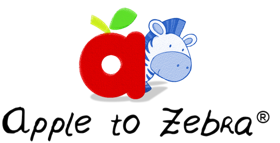Measurement, Time & Money
Measuring is a formal way to compare objects. Children need experiences with linear, weight, and volume measurement. Time and money are a daily part of everyone’s lives and are useful concepts for children.
Have the child measure tables, chairs, books, and other objects in the room with their hands, a crayon, a block, or shoe. The child can then report how long it is; for example, “5 hands long,” or “10 crayons long,” and so on.
Have the child jump or hop a distance, and then measure that distance with a pencil or block.
Make a ruler for the child out of cardboard. Show the child how to measure the length of objects, then let the child experiment measuring things in the house and outdoors.
Give the child their rulers and challenge the child to find something that is 2” long (5cm). After the child has found something, ask him/ her to find something longer and so on.
Measure the child with a piece of yarn. Have the child draw a picture of his/ her head on a paper plate and attach it to the yarn.
Provide the child with opportunities to measure liquids and solids with cooking experiences.
Time
Place a digital clock alongside your house clock. The child will begin to associate the numerals on the digital clock with those on the manual clock.
Let the child make a clock from a paper plate. You will have to write the numerals in pencil and let him/ her trace then in crayon. Cut a long hand and a short hand from construction and attach them to the center of the plate with a brad.
Teach the child how to identify the hour by the small hand on the clock. Call the child’s attention whenever it reaches the hour. For example, “Look! It is ten o’clock and time to get ready for a snack.”
Make a clock puzzle and have the child fill in the numerals.

Teach the child the days of the week and go over the calendar every morning. Leverage the Apple to Zebra’s calendar and ask questions like. “What was yesterday?” “What is today?” “What is tomorrow?”

Money
Give the child a container full of coins and ask them to group the ones that are alike together.
Give the child a container with two each coin. Have the child match the coins that are alike.
Put different amounts of pennies in small cups. Ask the child to count and tell you how many cents are in each cup.
Make a “Penny Store” in the room where all items costs one cent. You might have cereal, pretzels, raisins, or peanuts. Give the child 10 pennies and let them purchase the amount of each they would like. (Let the child take turns being the clerk in the store, too.)
Make a game with paper piggy banks. Write a different numeral on each bank and have the child count out the appropriate number of pennies for each bank.

Make a restaurant or grocery store area. Put price tags on items and let the child “buy” and “sell” items.
Take grocery coupons and have the child match up those that are worth the same amount.

